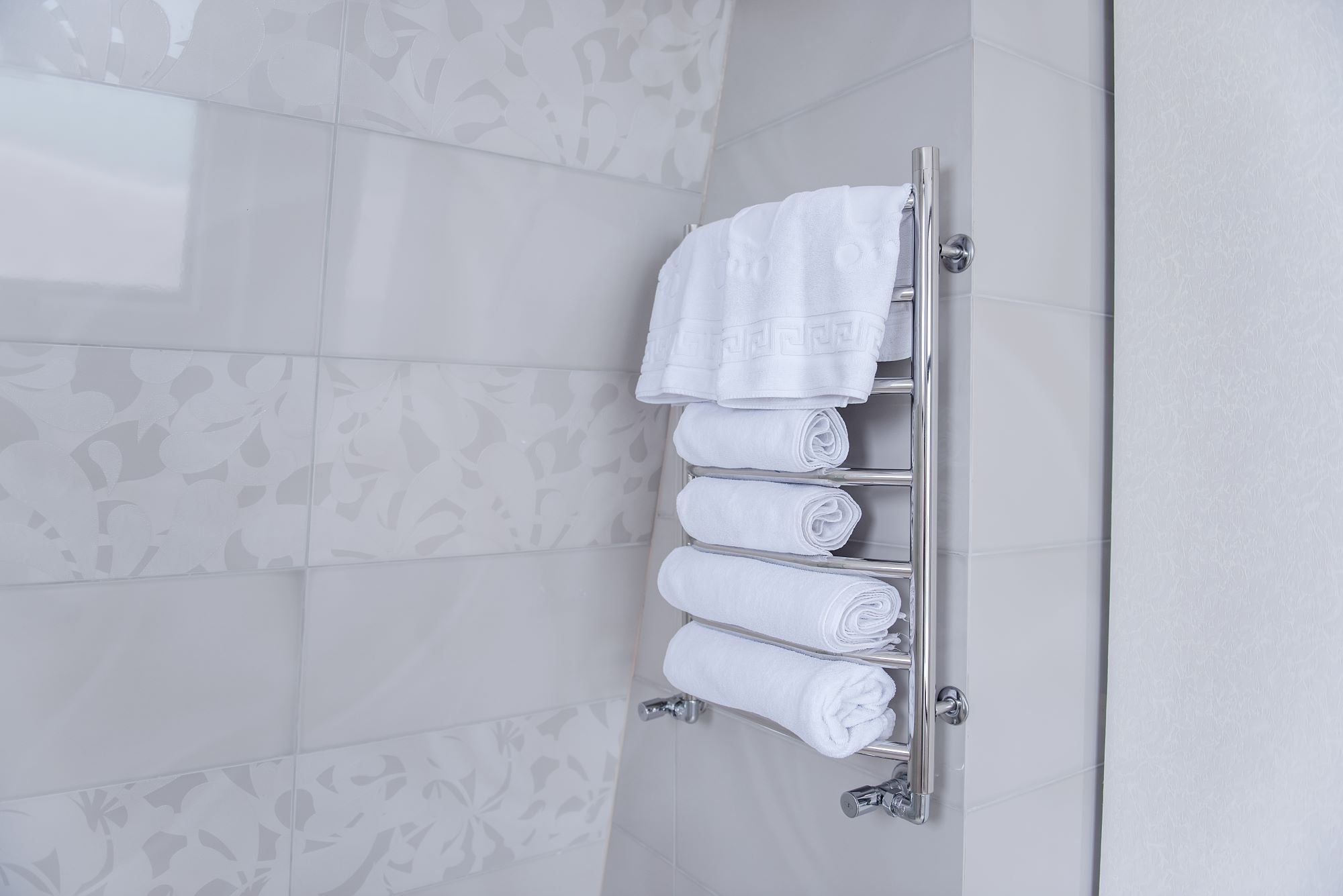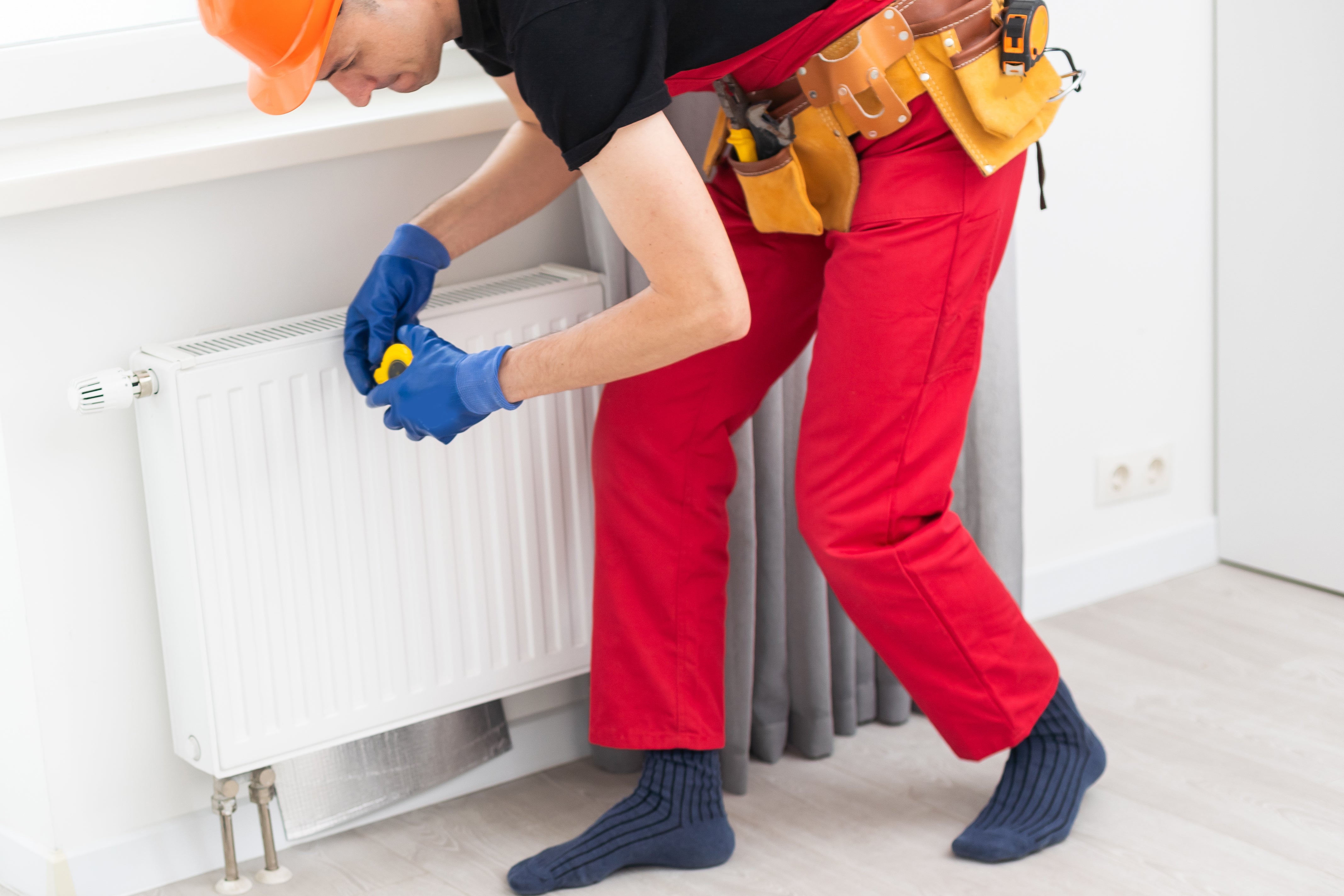
How to Bleed a Heated Towel Rail
If you’re keen to get the best output from your bathroom heating, then you might be interested to know how to bleed a towel rail. We break the process down into simple steps, so there’s no need to be daunted.
Over time, air enters the internal piping and will slowly affect the performance of your bathroom radiator. As the air bubbles slow the flow of hot water through your towel rail, you’ll find that it becomes less heat efficient.
Not only that, over time the air can corrode the internal metalwork of your radiator as air is more corrosive than the water that runs inside your radiator. Left unchecked, air can even cause gurgling, banging and damage as it forces its way through your towel rail’s piping system.
Clearly, this isn’t ideal. Luckily, it can be resolved by bleeding your heated towel rail.
Let’s get started.
What Do You Need to Bleed a Radiator Towel Rail?
Here’s what you will need:
- Old towels and a hand cloth - Have some towels that you’re happy to get wet handy for mopping up the spillage from your radiator’s bleed valve.
- Radiator bleeding key - You’ll need this specialised square-headed key to unlock the towel rail’s bleed valve.
- A wrench or pliers - In some cases, the bleed valve will be stubborn to open. These tools help to open it in these cases.
Tip: Make sure you assemble these things before you start so that you don’t end up leaving the room to grab them while your radiator is being bled.
How To Know If Your Radiators Need Bleeding
As a general rule, you should bleed your radiators once a year, regardless of whether you see any signs that air build-up is starting to affect performance. However, these are the key signs that your towel radiator needs bleeding.
- The radiator isn’t heating up as efficiently any more
- Noises like gurgling or banging that gets louder and more intense over time
- Pipes that rattle or shake with the intensity of the airflow
- Cold patches across the surface of the radiator, particularly towards the top
If you notice any of those signs, don’t panic. Our guide on how to bleed a towel rail breaks down the process into easy-to-follow steps.
How to Bleed a Towel Radiator in 7 Steps
Step 1 - Assemble Your Tools & Lay Down Towels
Get all of your kit together and lay down towels on the floor underneath the towel radiator you’re bleeding. That way your floor will be protected from any leaks during the bleeding process.
Step 2 - Turn the Heating Off
Remember to turn the central heating boiler completely off and let your radiator cool before you work on it. Otherwise, you risk letting hot water escape and potentially scald you. The towel radiator should be totally cool to the touch - This can take up to an hour.
Step 3 - Open the Towel Rail Bleed Valve
Switch the valve to the off position on both sides of the radiator. This will disconnect it from the rest of the central heating system.
First, locate the radiator bleed valve. Usually, the radiator valve for a towel rail can be found on the very top of the railing on one side or the other. Sometimes you will need to remove a protective top cap before you can access the valve.
Next, use the radiator bleeding key to unlock the valve screw while holding onto a hand cloth. Be ready to catch any water that emerges.
Step 4 - Release Air Pressure
Once the bleed valve is unscrewed you should hear a hissing sound as the air escapes. Once all of the air has been released water will begin to flow out. Once the water is flowing steadily out without any bubbles use your cloth to stem the flow while screwing the bleed valve closed.
Step 5 - Secure the Bleed Valve
Once you have drained the radiator, close the bleed valve with your radiator bleeding key. Be careful not to over-tighten when screwing it back on. The water should refill the entirety of the inner piping now that any trapped air has been eliminated.
Step 6 - Turn the Heating Back on
You’re now free to turn your central heating back on. We’d advise testing your towel rail to see whether the radiator bleed has helped to address any of the initial signs if they were present.
Step 7 - Consider Whether Your Towel Rail Needs Flushing
When the water emptied from your radiator, did you notice any brown discolouration? If so, this is a sign that your towel rail needs flushing. You might also notice your boiler making loud or unusual noises or cold spots at the bottom of your radiator.
Essentially, flushing clears out the inside of the radiator, eliminating any sludge that is gunking up the water flow of the radiator. Learn how to flush a radiator from our radiator experts.
How Often Should You Bleed a Heated Towel Radiator?
Keep your bathroom heating in good shape and its efficiency tip-top by bleeding your heated towel rail approximately once a year. Remember that if you still don’t feel confident to do it yourself or have the time, you can reach out to a plumber or handyman to help. The important thing is that the job gets done annually to avoid irreversible damage.
What Happens If You Don’t Bleed Your Heated Towel Rail?
If you don’t bleed your radiator you might start noticing that the air trapped in the heating system is making it far less efficient and costing you more money to heat your home.
At UK Radiators, we’re committed to helping everyone get the best from their heating - including saving money wherever possible. You can read more about how to reduce your heating energy usage in our handy guide.
Now that you know how to bleed a towel radiator you should be well equipped to
take action and reduce heat loss in your home. There are a variety of ways to do this, including by keeping your towel radiators running efficiently.
Though the advice is largely the same, you can also check out our guide on how to bleed a radiator for more practical tips on how to bleed standard central heating radiators.
Keep Your Radiators Running Like New With UK Radiators
At UK Radiators, it’s our mission to help you get the best from your household heating systems. To get in touch with our friendly team, give us a call on 0333 006 8227, or send your enquiry to sales@ukradiators.com.










